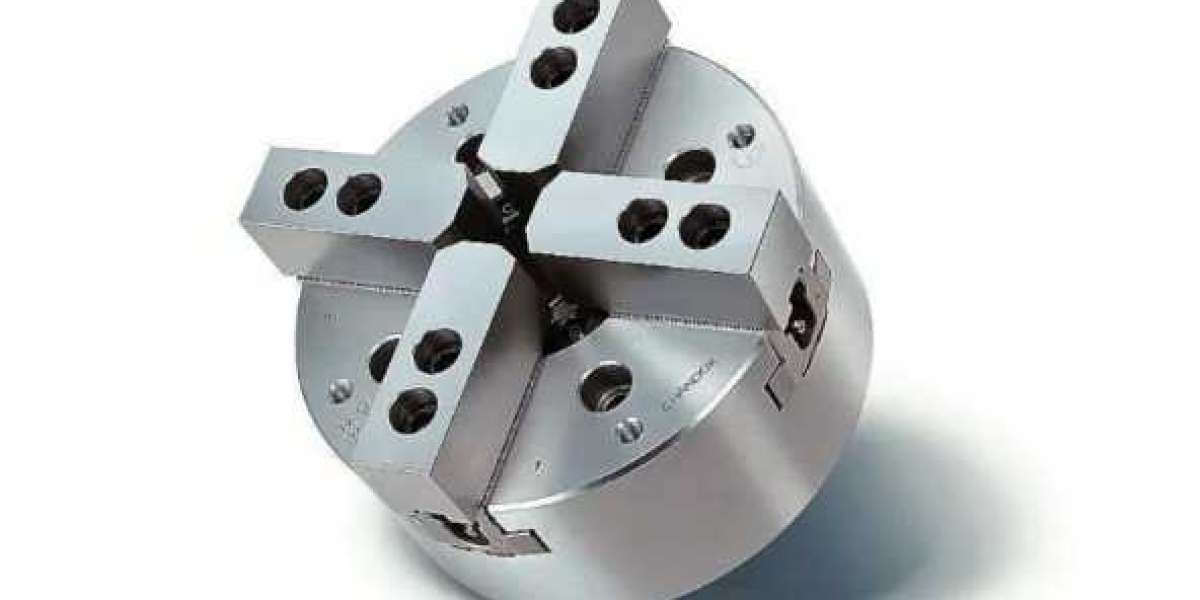CNC machining has revolutionized various industries, enabling precise and efficient manufacturing processes. A crucial component of CNC machining is the hydraulic hollow chuck. In this blog, we will delve into the significance of hydraulic hollow chucks, their benefits, and their role in improving CNC machining operations.
Understanding Hydraulic Hollow Chucks
Hydraulic hollow chucks are specialized tools designed to firmly hold and secure workpieces during machining operations. They are commonly used in CNC lathes and turning centers. These chucks consist of a hollow cylinder with channels that allow hydraulic fluid to flow, providing clamping force to securely grip the workpiece.

Benefits of Hydraulic Hollow Chucks
2.1 Enhanced Workpiece Stability
One of the primary benefits of hydraulic hollow chucks is their ability to provide excellent workpiece stability. By securely gripping the workpiece, these chucks minimize vibrations and ensure precise machining. This stability is essential for achieving accurate dimensions, improved surface finishes, and high-quality end products.
2.2 Versatility in Workholding
Hydraulic hollow chucks offer versatility in workholding applications. They can accommodate a wide range of workpiece sizes and geometries. By utilizing flexible top jaw designs or mandrels, these chucks can securely hold irregularly shaped or fragile components, expanding the capabilities of CNC machining centers.
2.3 Efficient Clamping Mechanism
The hydraulic clamping mechanism employed by hollow chucks ensures quick and efficient clamping and releasing of workpieces. This saves valuable machining time, enhancing productivity. Moreover, the uniform distribution of clamping force provided by hydraulic chucks ensures uniform material removal and prevents distortion of the workpiece.
Types of Hydraulic Hollow Chucks
3.1 Through-Hole Chucks
Through-hole chucks are commonly used when machining long workpieces that require support at the rear end. These chucks have a hollow center, allowing the passage of long workpieces through the spindle. The through-hole design facilitates machining operations such as drilling or boring to be performed along the entire length of the workpiece.
3.2 Bar Puller Chucks
Bar puller chucks are specifically designed for CNC lathe applications where bar stocks need to be machined. These chucks grab hold of the bar stock from the inside and provide secure clamping, allowing precise machining of the bar's outer surface.
3.3 Expanding Mandrel Chucks
Expanding mandrel chucks utilize an expanding mechanism to grip the internal diameter of a workpiece. They are often used in applications where external clamping is not feasible, such as thin-walled components or parts with irregular shapes. These chucks provide excellent concentricity and ensure accurate machining.
Importance of Hydraulic Hollow Chucks in CNC Machining
4.1 Precision Machining
Hydraulic hollow chucks play a crucial role in achieving precision machining results. With their ability to securely hold the workpiece, they eliminate vibrations and tool chatter, ensuring accurate cuts and dimensional consistency.
4.2 Improved Surface Finish
By minimizing workpiece movement during machining, hydraulic hollow chucks contribute to improved surface finish quality. The stable clamping provided by these chucks eliminates the risk of workpiece shifting, resulting in smoother surfaces and reduced post-machining operations.
4.3 Increased Productivity
The efficient clamping and quick workpiece changeover offered by hydraulic hollow chucks significantly improve productivity. Reduced setup times and faster machining operations lead to increased machine utilization and enhanced overall manufacturing efficiency.

Factors to Consider when Choosing Hydraulic Hollow Chucks
5.1 Chuck Size and Capacity
When selecting hydraulic hollow chucks, it is essential to consider the chuck's size and capacity. The chuck size should be suitable for the CNC machine being used, ensuring compatibility and proper functioning. Additionally, the chuck's capacity should meet the requirements of the workpieces to be machined, allowing for secure clamping and optimal performance.
5.2 Gripping Force and Pressure
The gripping force and pressure provided by hydraulic hollow chucks are crucial factors to consider. It is important to choose chucks that can generate sufficient clamping force to securely hold the workpiece without causing deformation or damage. The ability to adjust the gripping force is also beneficial, as it allows for customization based on the material and size of the workpiece.
5.3 Speed and Accuracy
Another critical consideration is the speed and accuracy of the hydraulic hollow chucks. Look for chucks that offer fast clamping and releasing capabilities, minimizing machine downtime and maximizing productivity. The chuck should also provide precise positioning and repeatability, ensuring
consistent results across multiple machining operations.
Maintenance and Care Tips for Hydraulic Hollow Chucks
6.1 Regular Cleaning and Lubrication
To maintain optimal performance, hydraulic hollow chucks require regular cleaning and lubrication. Clean the chuck thoroughly after each use, removing any debris or coolant residue. Apply a suitable lubricant to the moving parts, ensuring smooth operation and preventing premature wear.
6.2 Inspection and Repair
Periodically inspect the hydraulic hollow chucks for any signs of wear, damage, or leaks. If any issues are detected, promptly address them through repair or replacement of worn-out components. Regular maintenance will extend the lifespan of the chucks and ensure their continued reliability.
Future Developments in Hydraulic Hollow Chucks
The field of CNC machining is continuously evolving, and hydraulic hollow chucks are no exception. Manufacturers are constantly exploring ways to enhance these chucks' capabilities to meet the growing demands of the industry. Some future developments may include:
7.1 Advanced Hydraulic Systems
Technological advancements in hydraulics may lead to the development of more efficient and precise clamping mechanisms in hydraulic hollow chucks. Improved hydraulic systems could provide higher gripping forces, faster response times, and better control over clamping pressure.
7.2 Integration with Automated Systems
As automation plays a larger role in manufacturing processes, hydraulic hollow chucks may be integrated with automated systems. This integration could facilitate seamless workpiece changeover, reducing setup time and increasing overall efficiency.
7.3 Enhanced Material Compatibility
Future developments may focus on expanding the range of materials that can be effectively clamped by hydraulic hollow chucks. This would enable manufacturers to work with a wider variety of materials, pushing the boundaries of CNC machining applications.

Conclusion
The role of hydraulic hollow chucks in CNC machining cannot be overstated. By providing enhanced workpiece stability, versatility in workholding, and efficient clamping mechanisms, these chucks contribute to precision machining, improved surface finishes, and increased productivity. As technology advances, we can expect further developments in hydraulic hollow chucks, enhancing their capabilities and expanding the possibilities in CNC machining. Manufacturers should carefully consider their requirements and select the most suitable hydraulic hollow chuck for their CNC machining operations to achieve optimal results.








